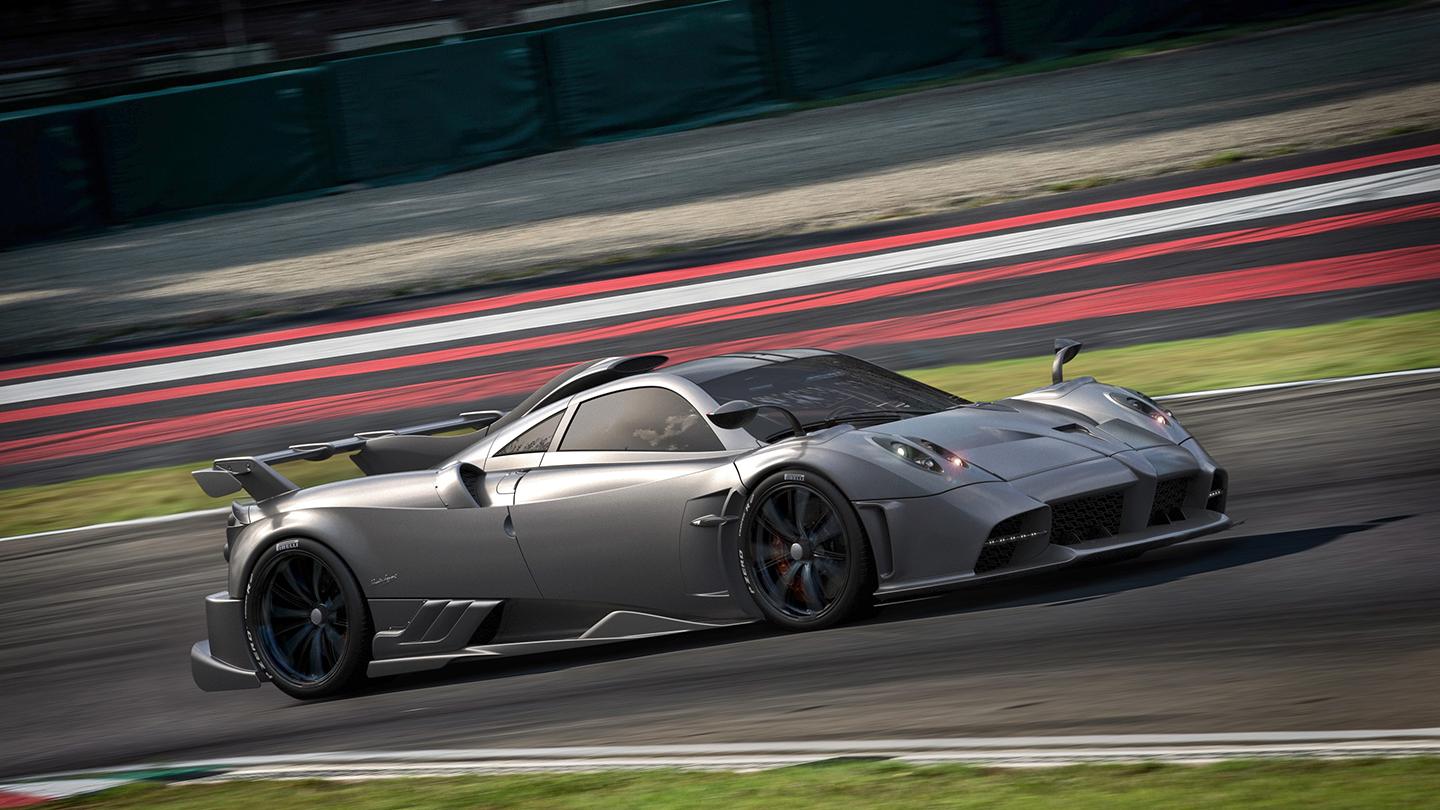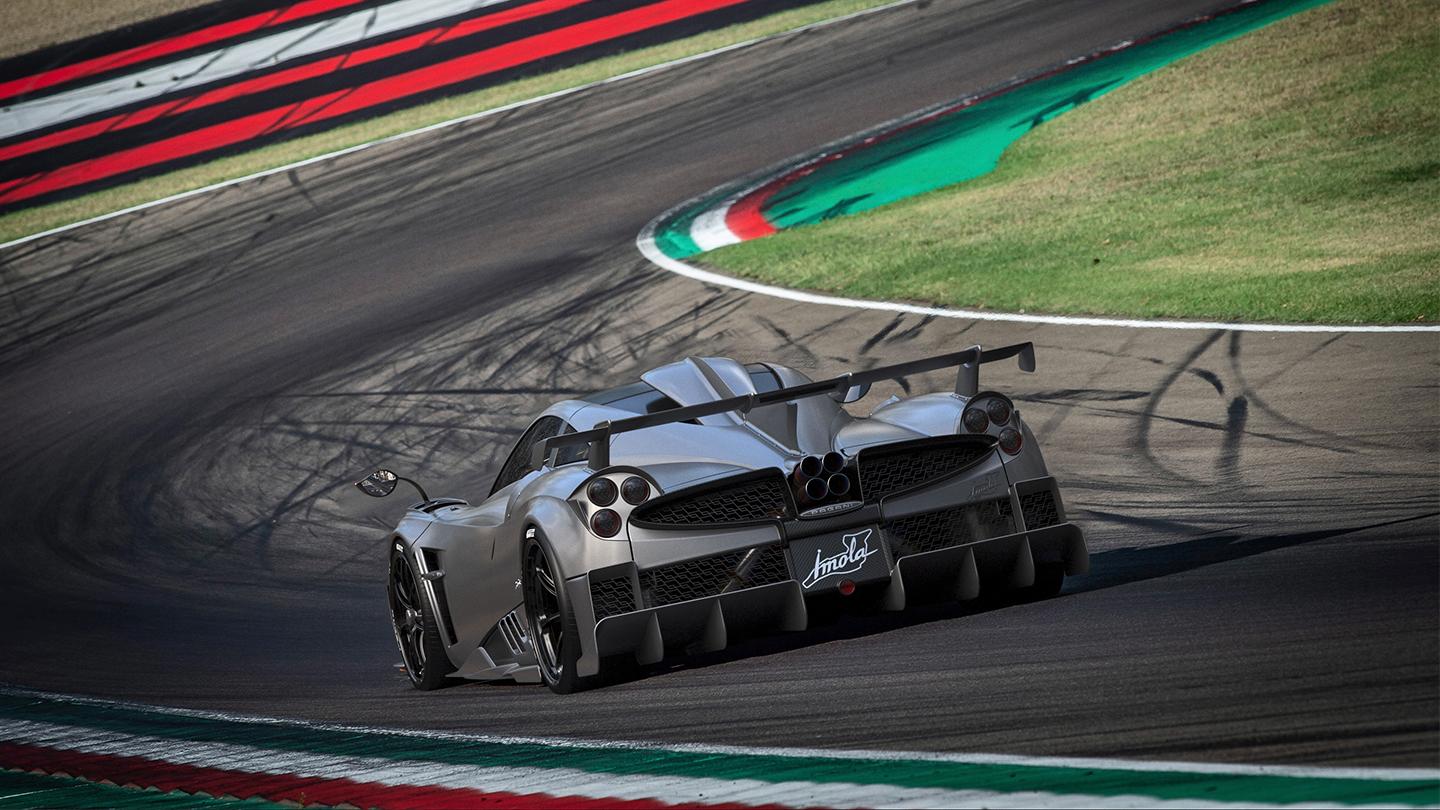Ahead of its debut at Geneva, Pagani has unveiled its latest ultra-exclusive hypercar. The Imola, named for the famous Italian racetrack, is a highly track-focused 1,246-kg (2,747-lb) beast making 827 horsepower.
It seems we’re going to have to surrender to the Le Mans definition of a hypercar at this point. Ever since the new Hypercar racing regulations came out requiring only 750 hp, companies have jumped on board and started calling any old thing over 750 horses a hypercar instead of requiring them to buckle down and break the 1,000-hp mark to earn that kind of title. Poor form, in our books, but far be it from us to rage against the tides. A “hypercar” it is.
The Imola uses a Mercedes-Benz AMG motor, a roaring 60-degree, 6-liter V12 making that aforementioned 827 hp as well as 1,100 Nm (811 lb-ft) of torque. The same motor, in Pagani’s other current model “hypercar,” the Huayra, makes 764 horses and 1,000 Nm (738 lb-ft).
Indeed, while Pagani’s press release speaks of the Imola as a new model, and a “vehicle laboratory” that merely shares some parts and concepts with the Huayra, if you put the two next to each other, they look like minor bodywork variants of one another. This raises the question: what exactly has the Imola got that makes it €2.65 million (US$2.87 mil) more expensive than the Huayra BC, other than some engine tuning?

Pagani
Pagani speaks of aerodynamic tweaks so extreme that founder and Chief Designer Horacio Pagani sounds like he almost doesn’t want his name on it: “We can’t say that it’s an elegant car,” Pagani says. “We wanted an efficient vehicle, and just as you’d expect if you were looking at an F1 single-seater, this led us to design a car with additional aerodynamic features. So, although on the one hand these details may detract from the lines and overall aesthetics of the vehicle, on the other, they also allow to improve lap time, ease of driving and especially safety.”
Thus, there are four active winglets that flap about under certain speeds and conditions, going for different aerodynamic effects. There are also chunky, jagged skirts up the sides, and a big, mean-looking scoop on the roof for ram air and river crossings. If this is what Pagani calls inelegance, we can live with it.
The central monocoque frame, made from “carbo-titanium HP62 G2 and carbo-triax HP62,” is the same as the one on the Huayra Roadster BC. The suspension geometry has had a refresh, and now includes the ability to lift and lower the front for driveways and speed humps. Then there’s this: according to the press release, “driving pleasure is ensured thanks to active dumpers.” That could get messy. Maybe if they charged 5.1 million euro they could afford to get Grammarly.

Pagani
The paint, whoo boy, it’s got some fancy paint. Not to look at, mind you, it looks like regular ol’ silver paint. But Pagani says it’s invented a new painting system called “Acquarello Light” that means you can get a nice finish while using 5 kg (11 lb) less paint. This is all part of a “fanatical attention to weight-saving” that results in the Imola being 28 kg (62 lb) heavier than the Huayra BC. Huh?
Sorry, but the closer we look, the skimpier this new emperor’s clothes seem to be. A bit of fettling in the engine bay, some relatively lightly redesigned bodywork and a lightweight paint job might be enough for a special edition, but to call the Imola a whole new model and charge twice the money for it seems ludicrous.
Of course, that hasn’t bothered Pagani buyers one bit, because these people are clearly comfortable with ludicrous uses of money. The company was only ever going to build five Imolas, which are all already sold, after the grinning factory test drivers did some 16,000 km (~10,000 mi) worth of race-pace testing on track. Pagani points out that this is more than three times how far it’d have to go to prove its reliability at Le Mans, which could either be taken as an indication that the factory is thinking about going racing, or as a way of chickening out and still trying to get some Le Mans shine on the brand.
Either way, check out a video below.
Pagani Imola – The powerhouse of technology for the racetrack and road
Source: Pagani





